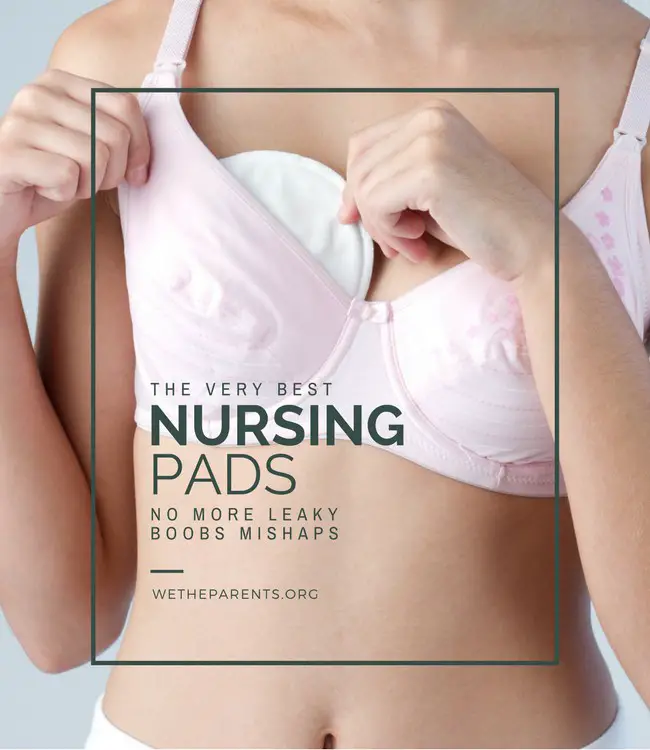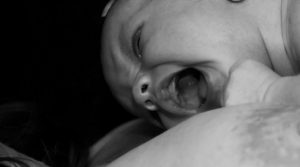Our top picks
Best breast pads: Bamboobies Overnight Nursing Pads
"Comfortably protects from leaks all night long with the ease of a disposable."
Best stick on breast pads: Medela Disposable Nursing Pads
"Very easy on the pocketbook, this pack of 60 costs just pennies each."
Softest nursing pads: Lansinoh Stay Dry Nursing Pads
"With InvisiLock Core and waterproof lining, these disposable pads will meet every mom’s needs."
Best washable breast pads: Eco Nursing Reusable Bamboo Nursing Pads
"Washable nursing pads made from soft, sustainable fabric."
Best nursing pads for heavy leaking: Johnson’s Disposable Nursing Pads
"Made of natural cotton for super-absorbency."
Best silicone breast pads: LilyPadz Silicone Nursing Pads
"This single pair can be used and washed again and again so you’ll never run out."
Best reusable nursing pads: Ameda ComfortGel Soothing Pads
"These cooling hydrogel pads bring relief to moms with painful breasts and nipples."
In this article:
Breastfeeding is an incredibly empowering continuation of the pregnancy and birth journey, but it is not without its moments of frustration — leaking breast milk when you least expect it is among these charms. The sight and sound of your little one naturally encourage your breast milk to let down, but you may be surprised to find that a baby crying at the shops can also be a trigger for faucet-level milk leakage.
Nursing pads are designed to address just this issue — they prevent leaks to keep your clothes from getting messy, and can also act as a shield for sore nipples by putting a soft barrier between your delicate skin and your bra. Our list of the best nursing pads has both reusable and disposable options, so there’s something here for every mom.
Let’s jump in.
Our picks of the best nursing pads
Best breast pads
Our opinion
When it comes to comfort and simplicity, Bamboobies Overnight Nursing Pads (check price on Amazon) are our top pick. These pads are made from a combination of bamboo and cotton, which are both highly absorbent and make for some of the softest nursing pads available. Upkeep is delightfully simple, as they can be tossed in the washing machine with baby’s clothes in between uses.
There are two types of breast pad available, a daytime pad for lighter leakage and a nighttime pad for heavier leaking. The nighttime pad is a special three-layer design meant to absorb heavier flow while keeping moisture from the breast. Because Bamboobies washable nursing pads are thin, they easily form a contoured shape that prevents accidental slips and visibility. This allows you to wear these pads discreetly, leaving no indication you are using nursing pads at all.
For moms who like to add a little fun and color even to undergarment essentials, these pads also come in fun shapes and colors that can add a bit of pizzazz.
What we love
- Washable and reusable
- Both daytime and overnight pads for 24-hour coverage without worry
- Pads 3-layer design keep moisture from your breast
- Thin curve pads have a contoured shape for an effective fit
- Best overnight nursing pads
Watch for
- Once the pad gets wet, it must be replaced. Some moms got thrush by not changing the pad quickly enough.
Best stick on breast pads
Our opinion
A great pick for moms on a budget, Medela Disposable Nursing Pads (check price on Amazon) cost less than .10 apiece, making them a bargain in the world of disposables. They’re highly absorbent thanks to a three-layer construction, which works double time by whisking moisture away from the nipple to prevent cracking, chafing, irritation, and thrush.
These disposable pads use a double adhesive to affix to your clothes and stay in place for all-day wear, but it’s important to note that you’ll need to wear a nursing bra, sports bra, or other suitable top to sleep in if you want these pads to stay in place overnight.
What we love
- With a pack of 60 selling for less than 10 cents each, it’s a super bargain
- Unique 3-layer design keeps moisture from your breast
- Two adhesive strips keep pads in place
Watch for
- For overnight protection, you will need to wear clothing that the adhesive can stick to
Softest nursing pads
Our opinion
If you are leaning toward disposable nursing pads, Lansinoh Stay Dry Nursing Pads (check price on Amazon) are our favorite. These individually-wrapped pads have a quilted lining that pulls the moisture away from your nipple, keeping the area dry. The pad is thin and slightly contoured to fit the natural curve of the breast which allows for a more discreet fit.
Lansinoh pads offer a choice of absorbency, which is great for varying throughout your day based on your knowledge of your milk flow and leak potential. There are pads intended for light leaking and pads made for heavier flow, so you can choose what fits you best. They also offer an “Ultra Soft” option for moms experiencing sensitive or painful nipples, which is very comfortable and super soft against chafed skin.
What we love
- Best disposable nursing pads
- Quilted lining pulls moisture away from your nipple
- You can buy your choice of coverage for day/night use or for your situation
- Ultra-soft option for moms with cracked and sore nipples or sensitive skin
Watch for
- Some users have reported absorbent particles falling out of pads, so check each pad before using
Best washable breast pads
Our opinion
If you value an effective product that is good for you and the planet, these Eco Organic Bamboo Nursing Pads (check price on Amazon) might be what you’re looking for. Econursing pads offer an eco friendly solution for breastfeeding moms, made from organic bamboo that is sustainably harvested.
The soft, absorbent pad is made from a combination of bamboo and cotton, and two absorbency levels are offered. For lighter leaking, a daisy-shaped flower pad is available. A traditional round pad is used to protect you from heavier leaking. A leak-proof backing is also included, preventing messes even when you’re unable to get away to switch out your pads. These natural nursing pads come in a variety of colors and include a carrying pouch and a mesh laundry bag for washing.
What we love
- Best nursing pads for eco-friendliness, made from cotton and sustainably harvested bamboo
- Flower shapes for lighter coverage; round for heavier leaking
- Custom leakproof lining
- Best for extra sensitive skin
- Can be used with or without nipple cream
Watch for
- Some moms say that the outline of the pad is visible through more sheer clothing
Best nursing pads for heavy leaking
Our opinion
Johnson’s Disposable Nursing Pads (check price on Amazon) may be a good choice if you leak heavily, as their extra absorbency should bring peace of mind. These pads do not come individually wrapped, so if you are often on the go, you will need to find a way to carry these pads and keep them hygienic.
Keep in mind these Johnson’s pads are thicker than other disposable pads. The thickness allows them to be ultra absorbent, but could increase visibility of the pad when being worn. These pads are smaller in diameter than other disposable pads, so if you have larger breasts but still prefer the nursing pad cover has a larger surface area, these may not be the best fit for you.
What we love
- Made from natural cotton for comfort and breathability
- Soft lining and nipple indentation to fit well
- Great absorbency for heavy leaking
Watch for
- These pads are not individually wrapped, so you will need to put them in a baggie or other container for on-the-go days
Best silicone breast pads
Our opinion
If you are looking for a completely different nursing pad option, LilyPadz Reusable Silicone Nursing Pads (check price on Amazon) might be a good fit. These nursing pads attach to your breast, not your bra. They have a tacky, adhesive-free lining that keeps the pad secure and doesn’t leave any residue that could be harmful to you or your baby.
LilPadz is unique in that is doesn’t absorb leaked breast milk, it actually prevents milk leakage by applying constant gentle pressure to the nipple during use. These pads are latex-free, have been dermatologically tested, and do not increase the likelihood of clogged ducts or mastitis.
Because these silicone pads adhere directly to the breast, you have the freedom to go swimming and to go braless. It is recommended to wash these pads daily by hand using special LilyPadz wash or wipes. Be aware that the initial price point for these nursing pads is higher, and additional expense is also created in the product-specific daily upkeep of the pads.
What we love
- Attach without adhesive to your breast, not your bra
- Best nursing pads for stopping leaks entirely
- Tested to confirm the technology doesn’t increase mastitis or clogged ducts
- Can be worn while swimming and without a bra
Watch for
- Needs specific products for washing
Best reusable nursing pads
Our opinion
Sore, cracked, and sensitive nipples are an occasional unpleasant reality of breastfeeding, and a nursing pad designed to provide therapeutic relief along with leak protection is a clear win when things get painful. The Ameda ComfortGel Hydrogel Pads (check price on Amazon) are stored in your refrigerator, offering cooling, refreshing relief when applied to your breasts.
Moms suffering from mastitis and general soreness will also appreciate the relief these pads can offer, as their coolness can help to decrease swelling and is recommended by hospitals for postpartum care. If you’re struggling with nipple or breast pain that’s beginning to affect the trajectory of your breastfeeding journey, the therapeutic coolness and moist healing environment provided by these pads may help you to keep nursing while also speeding your recovery.
One thing to note: While these pads are advertised as a set of two pairs, what’s actually on offer is one pair of hydrogel pads.
What we love
- Cool relief for sensitive skin from breastfeeding or pumping
- Best nursing pads for relieving mastitis pain
- Great for the first weeks of breastfeeding or subsequent soreness
Watch for
- Only one pair though it's advertised as two
Final verdict
Amongst the unpredictability of motherhood, finding products you trust that can cut down on unexpected surprises is always a joy. Good nursing pads are high on the list, and these are our top picks:
- For the best reusable nursing pads, Bamboobies Bamboo Nursing Pads are our favorite for effectiveness and comfort;
- For the best disposable nursing pads, Lansinoh Stay Dry Nursing Pads takes top prize for quality protection and product variety.
Ultimately, the kind of nursing pads that are best for you will be determined by your needs and lifestyle. A mother who’s frequently on the go may find reusable pads to be too much of a hassle, while a stay-at-home-mom might prefer to cut down on waste by avoiding disposables; as long as the product is comfortable and performing as advertised, it’s a win.
FAQs
Are nursing pads always necessary? When do they come in handy the most?
While nursing pads can offer a great deal of comfort and security, they’re not necessary for every mom. The heaviness and predictability of your milk flow will go a long way in determining how helpful breast pads will be to your nursing experience. Moms who don’t breastfeed or who don’t have frequent leaks likely won’t need to splurge on breast pads, but for many nursing moms, they’re a godsend.
Here are some times that nursing pads may be especially helpful to you:
- Directly after childbirth – as your breast milk is coming in; it’s impossible to determine how heavy your milk flow will be before it arrives, but having breast pads on hand to keep you clean and comfortable checks off one box on your baby-preparedness list
- When your nipples are sore – from breastfeeding and lactation; nursing pads create a soft and comfortable barrier between your nipples and the fabric of your bra that can minimize friction and resulting irritation
- When you’re on the go for long periods – especially when time to feed or pump may be unpredictable; these are situations where leaks are common, and wearing breast pads can prevent unexpected embarrassment in situations where you may not easily be able to sneak off and clean up (keep an extra pair in the diaper bag)
Editor’s note:
In addition (or in place of) nursing pads, consider collecting that liquid gold rather than throwing away or washing pads saturated with your breast milk! Silicone cups like lacticups help catch any leakage and make storing a few extra ounces here and there quick and easy.
Related: The Best Nursing Pillows of 2021
Should I use disposable or reusable nursing pads?
Hey, mama – we’re not here to judge. There are lots of great nursing pads, both disposable and reusable, and the pick that’s right for your lifestyle and your comfort is the one you should select. Figuring out the best nursing pads for you may mean a combination of assessing the pros and cons of each pick as well as your personal exploration and experience, but we’ll do what we can to help you decide.
Disposable nursing pads
Pros
- The sanitation level of disposable nursing pads is basically unrivaled as long as they’re stored correctly, since much like a sanitary napkin, they come individually wrapped
- For moms who are experiencing significant leakage, disposable nursing pads are able to offer more absorbency in a thinner unit than some reusable options
- Unlike reusable nursing pads, disposable styles feature an adhesive strip – again, much like a sanitary napkin. These sticky strips attach to your bra and keep the pad in its desired location
- Because they’re disposable, replacement and clean up are a fuss-free process that adds only seconds to a trip to the ladies’ room
- Designed for discretion, ultra thin disposable nursing pads usually won’t show through either your nursing bra or your outer garments.
Cons
- Not all disposable nursing pads are equally absorbent, and some ultra thin disposable nursing pads don’t do the job as well as a reusable or thicker disposable pad would
- Disposable nursing pads tend to lack the breathability of their reusable counterparts, as they’re typically designed much like a pantyliner that features a thin absorbent layer and a waterproof attaching surface. The lack of airflow can lead to thrush, as it creates heat and moisture that aren’t being released.
- While many disposable nursing pads are eco friendly, not all picks are as green as others, so looking for sustainable picks is a lot kinder to the environment
Reusable nursing pads
Pros
- While most disposable nursing pads are made partially with synthetic materials, you can find cotton, wool, silicone, and organic bamboo nursing pads designed to be reused which are much better for moms with very sensitive skin
- Reusable breast pads are designed to be machine washable and reusable – the initial investment required to buy a few pairs is higher, but since reusable pads last and don’t often require replacing, the overall cost of choosing reusable pads is significantly lower
- It’s hard to argue with the environmental friendliness of washable pads, which, like the use of cloth diapers, are a great way to minimize waste production
- The breathable fabrics that are used to make reusable breast pads are conducive to mom’s skin health, offering airflow that prevents thrush and irritation while also being super soft against cracked and irritated nipples
Cons
- In order for reusable picks to offer an effective level of absorbency, they are often a bit thicker than the average disposable, making them easier to see through nursing bras and outer garments
- While most reusable nursing pads do have a waterproof layer that keeps your garments clean during wear, 100% cotton nursing pads will not have this feature and may require more frequent replacement on heavy leak days
- Clean up is a little tougher with reusable breast pads, particularly when you’re away from home, as you’ll not want to throw a dirty one into your purse or bag; carrying a plastic zipper bag or waterproof pouch will give them a safe place to reside until you’re home and can clean up properly
How do you use nursing pads?
Nursing pads are user-friendly, but it can take a little practice getting started. Follow a few easy steps and you can confidently move ahead with your day without the fear that leakage might occur.
- Make sure your nipple is completely dry, both patting away any moisture and allowing your skin to air dry. This is an important step in reducing the occurrence of yeast buildup and thrush.
- Position pad in cup of bra (or over nipple if using a silicon pad), using the pad’s contoured shape for guidance if possible. Peel adhesive backing away on disposable pads and press, allowing stick to bra.
- Center your nipple on nursing pad. Readjust if necessary.
- Replace when damp. If your nipple becomes stuck to the pad, just add a little water to the area around your nipple and carefully peel away the pad.
Related: Best Nipple Creams of 2021 (Ouch to Aaah)
How often do I need to change my nursing pads?
Whether it’s a disposable or reusable pad, the potential risk of bacteria or fungal growth exists as soon as there is moisture. Therefore it is suggested that nursing pads be changed once they become damp. If moisture is allowed to build up and remain trapped, yeast can develop and thrush can occur. If you are already suffering from thrush or have a history of yeast infections, be extra intentional about replacing your nursing pads and always give a thorough washing to reusable pads.
How many nursing pads will I go through in a day?
Not all breastfeeding moms need the same number of nursing pads, and how many you need may even vary by individual throughout their nursing experience. Essentially, you will not know how often or how much you’ll leak until you experience it. There are moms who never require a nursing pad, but for others, they’re serious parenting essentials. Your body will ultimately make itself known to you, but don’t be surprised if things change up every so often.
When you first start nursing, your best bet is to have enough nursing pads on hand to replace them every few hours throughout the day. This means having 10 to 12 sets on hand – it’s not a time when you or your partner will want to be focusing on laundry, so it’s a number that will keep you from running out. It may be a good bet to start out with a box of disposable nursing pads, as until your first few weeks of nursing have passed, it’s hard to determine how many reusable nursing pad sets you will wind up requiring.
Are there any safety risks I should be aware of when using nursing pads?
While the conditions that can be caused by nursing pads are not life-threatening, they can be very painful and significantly impact your ability to breastfeed at a critical time in your baby’s development. Using proper hygiene with your nursing pads and making picks that are conducive to skin health are the best ways to avoid these conditions, though a nursing mother with sensitive skin may be more prone to irritation than others. Wondering what kinds of health problems can be triggered by nursing pads?
- Thrush: An unpleasant overgrowth of a fungus called Candida, thrush is essentially a yeast infection of your breast and nipples. The resulting rash is red, itchy, sore and hot, leading to painful skin and sensitive nipples; it can make wearing any garments uncomfortable, and can make breastfeeding painful and unpleasant for mom.
- Mastitis: Although it’s the less common of the two conditions nursing pads can cause, mastitis is a bit more serious and symptoms and treatment may take longer. Mastitis is a painful infection of the breast caused by blocked milk ducts, and when left untreated, it can become very painful, engorged and unsightly. Professional medical advice and care are always advised for cases of mastitis, as antibiotics are required to clear the infection completely.
What are the best ways to avoid skin conditions caused by nursing pads?
Fortunately, both of the most common skin issues that nursing pads can cause are NOT most commonly caused by nursing pads. Both thrush and mastitis may occur in any nursing woman, but avoiding nursing pads as a trigger is simple.
- The buildup of Candida that happens in a thrush infection is caused by heat and moisture that’s trapped against mom’s skin. Nursing pads that aren’t breathable, especially that are worn for an extended period of time while damp, have the potential to be serious thrush triggers. Making sure your breasts are clean and dry when changing your nursing pads, using breathable reusable picks and changing damp nursing pads without delay can help to keep thrush infections at bay.
- Most commonly, mastitis is triggered by risk factors like overly tight fitting bras, clothes or undue pressure on the breast which restricts milk flow. The connection with nursing pads comes in when we realize that the painful infection can also be caused by sore nipples with open skin, which can be triggered by poor hygiene and infrequent changes with nursing pads. Using a cream that’s specifically designed to ease pain, impart serious moisture and create a barrier that will protect your sore or cracked nipples is one way to help them heal and prevent mastitis. Changing damp nursing pads without delay and making sure they’re not pressed tightly against the breast by a bra or other garment is the other best practice for avoiding the unpleasant infection.
Is it possible for me to make my own DIY washable nursing pads? How do I do it?
We’ve already drawn the parallel here between reusable nursing pads and cloth diapers, which we’re sure sent wheels turning in the heads of crafty moms. Yes, you can absolutely DIY your washable nursing pads, and in fact, the process is really simple.
The process starts by gathering three fabrics – one soft cotton, one thicker, more absorbent material (this can also be cotton), and one that’s fleece or wool for backing. Moms can stack three equally sized circles – think about four inches in diameter – and sew them by hand or machine to create a reusable nursing pad that won’t break the bank.
Check out this video to help you get started.
How do you wash nursing pads?
Washing nursing pads is not difficult, it just requires a little extra consideration. Place the pads in a mesh laundry bag and wash them in mild detergent with no fabric softener. If you or your baby have thrush and you are using reusable nursing pads, it’s important to know that yeast can withstand a regular cycle in your washing machine.
While there are a number of ways to treat the bacteria build-up, two simple home remedies are washing the nursing pads in a cup of vinegar during the wash cycle and allowing pads to sit and dry for two weeks which allows the yeast can to be eliminated without using harsh chemicals.











